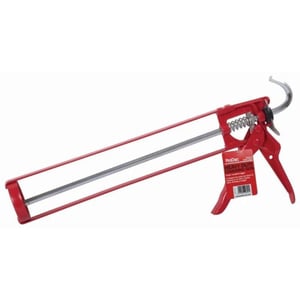The key differences between caulk and silicone come down to flexibility, paintability, and water resistance. Caulk is less flexible and can shrink or crack over time, making it better suited for decorative jobs or areas with minimal movement. It's also paintable, which makes it a popular choice for interior finishing work. Silicone, on the other hand, is highly flexible and water-resistant, making it ideal for areas exposed to moisture and temperature changes—like bathrooms, sinks, and shower cubicles.
How to use decorators caulk? Your common questions answered
If you’ve just bought some decorator’s caulk—or you’re thinking about it—you’re probably wondering how easy it is to apply and whether it’s right for tidying up gaps and edges in your decorating project. While caulk is a handy tool, there’s definitely a bit of technique involved. If you’re new to using it, we recommend reading this guide and doing a few practice runs before tackling your main task.
Why use caulk?
Caulk is an easy and cost-effective way to achieve a clean, professional finish—especially where different materials meet or where there are small imperfections in joints or corners. It’s ideal for tidying up skirting boards, smoothing out the edges when panelling a room, hiding nail holes, or softening harsh corners for a more seamless look.
Step by step guide on how to use decorators caulk
Clean and dry the area thoroughly – Before applying caulk, ensure the surface is dry and free from dust or debris. This will help the caulk adhere properly and result in a smoother, longer-lasting finish.
Cut the nozzle & load the gun - Remove the nozzle cap and use a sharp knife to cut the tip of the nozzle at a 45-degree angle, about an inch from the end. For a larger bead of caulk, cut further down the nozzle.
Apply the caulk - Start at one end of the gap—like a corner if you're caulking along skirting boards. Hold the caulking gun at a shallow angle and gently squeeze the handle. As soon as the caulk begins to flow, move the gun steadily along the gap using a smooth, even motion for consistent coverage.
Smooth & finish -This is where it all comes together. As soon as you've applied the caulk, smooth it out while it’s still wet. You can wet your finger, use a damp kitchen sponge, or a sealant finishing tool for a clean, professional finish. Sealant finishing tools often come with different shapes and edges to suit various angles and surfaces.

How long does caulk take to dry?
Most decorators caulk dry within 1-2 hours and can be overpainted in around 3-4 hours.
What is the difference between decorators caulk and silicone?
Best selling caulks & decorating tools
We sell a wide-variety of decorating tools, including caulks, filler, adhesive and sealants. Below we have listed our top 3 caulking tools for your next project.





